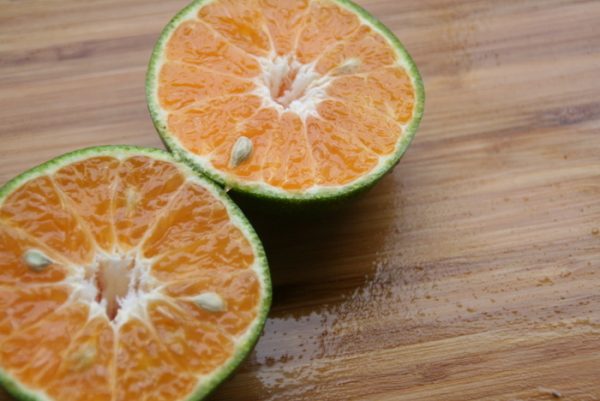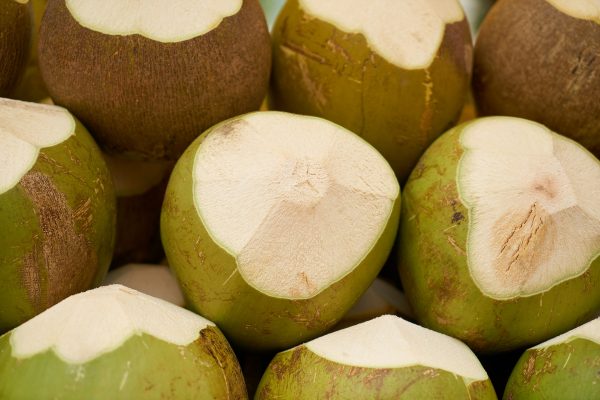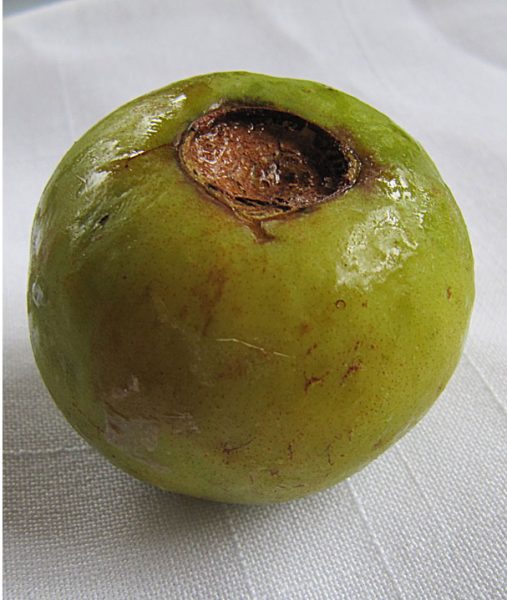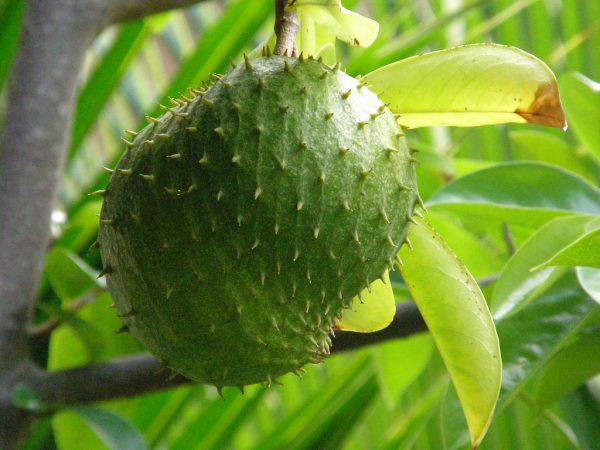Wednesday, November 27th, 2019.
In this Daily: Tropical Fruits for the Summer in Costa Rica
The warm days full of sunshine during the summer in Guanacaste are complemented well by the cool, fresh taste of Costa Rican fruits. Any tico can remember the refreshing taste of pipa fría on a warm day, frescos of guanábana and cas, the tart taste of a limón mandarina in teas or limonadas.
These four fruits can all be found around Las Catalinas, and add a sense of unique flavor to the months ahead.
Limón Mandarina / Mandarin Lemon (Citrus x Limonia)
 Fresh sliced limón mandarina | PC: Commons
Fresh sliced limón mandarina | PC: Commons
Worldwide, lemons and limes are the two most frequently used members of Rutaceae, the family that includes all citrus fruits. Thanks to their versatility and their sharp, tangy flavors, lemons and limes serve as a garnish for a wide range of food and beverage, like adding a touch of flavor to a glass of water, tea, or juices, and lending flavor to fresh grilled fish and seafood among many other uses.
In Costa Rica, there are no yellow lemons, which are instead replaces by many varietals of sour limones like the criollo, mesino, agrio, and more. The most common of these limones is the limón mandarina, or mandarin lemon. Compared to the exceedingly tart flavors of lemons and limes, the limón mandarina has a slightly gentler taste that trends towards the flavors of an orange, providing a well-rounded complement to a drinks and food.
You can find limón mandarina in many places throughout town, especially at Limonada, where it can add to the fresh grilled snapper, a garnish on a glass of water, or in a tea or juices.
Pipa / Early-Ripe Coconut (Cocos nucifera)
 Fresh pipas (young coconuts) | PC: Commons
Fresh pipas (young coconuts) | PC: Commons
As they mature, coconuts are filled with a sweet, nutrient rich water, which over time condenses into coconut milk before eventually drying out into the flaky white coconut flesh of a ripe coconut.
Pipa is the name used in Costa Rica and parts of Nicaragua and Guatemala for coconuts in the early phase of maturation, in which the nutrient rich coconut water, or agua de pipa is still fresh and plentiful.
Pipa fría is an iconic snack that can be found at beachside stalls, roadside stands, festivals, concerts, events, and anywhere many people gather in the outdoors. Vendors cut the fruit open with a machete, revealing the slightly sweet agua de pipa inside to drink.
Despite being almost 94% water, agua de pipa is densely packed with potassium, magnesium, sodium, Vitamin C, calcium and other key nutrients, which makes pipas a cool and satisfying snack that is exceptional for rehydration on a warm day.
Thanks to pipas’ flexible growing conditions they can be found throughout the year, and are most conveniently found in town right at Copper & Stone Gourmet Grocery.
Cas / Sour Guava (Psidium guajava)
 The cas fruit off of the vine | PC: Commons
The cas fruit off of the vine | PC: Commons
The cas, also known as the sour guava, is a fruit found in many backyards and public squares in Costa Rica. Much like oranges and grapefruits in other parts of the world, this easy availability and rich tart flavor makes cas perfect for drinks like the fresco de cas, in which fresh juice is mixed with sugar, water, and sometimes a touch of cream for a cool, sweet, and slightly tart drink for a summer’s day. Nieve de cas (cas ice cream) is another popular treat for a warm day, made with water, not dairy, for a tart and refreshing flavor.
In town, many House Moms bring in fresh cas when trees are ripe and fruits are plentiful to make fresco de cas. Another option to try this flavor is with Rubes de Cas, a craft beer from Costa Rica Craft Brewing Co. that’s often available on tap at Limonada.
Guanábana / Soursop (Annona muricata)
 Guanabana can grow up to five pounds in the wild | PC: Commons
Guanabana can grow up to five pounds in the wild | PC: Commons
The guanábana is an enigmatic fruit found throughout Costa Rica, weighing up to five pounds with a bulky exterior covered in spikes.
Guanabana’s enigmatic nature continues to its flavor, which defies classification. The fruit is partially tart, with an aroma like a pineapple, yet this tartness blends with a secondary sweet and creamy flavor, and the texture is close to a banana, but juicier and less pasty.
The most common way to enjoy guanábana is with the ripe fruit blended up and served as a tart, creamy, and sweet smoothie or as part of a cocktail. Request a taste with the chefs of Bahía Group during an in-home dinner or barbecue, as these sweet drinks can be a flavorful start to a meal or an interesting treat with dessert.
Try Them When You Stay in Town
Thanks to Costa Rica’s plentiful biodiversity, there is a wide variety of fruits and plants including starfruit, dragon fruit, coffee, cocoa, and many more to discover in the country, which come into season at different times throughout the year.
Whether stopping in for a pipa fría, adding limón mandarina to juices, waters, and tea, or sipping frescos de cas or guanábana, these tropical fruits of Costa Rica add a refreshing flavor to summer days spent on the trails, the water, or all throughout town.
[maxbutton id="1" url="https://cta-redirect.hubspot.com/cta/redirect/4917861/bb90976c-fd33-457a-a285-892e384bad66" text="Try them in Las Catalinas" ]